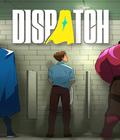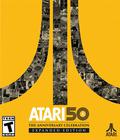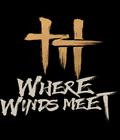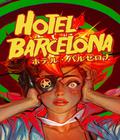
Genre: Platformer/RPG
Publisher: Universal Interactive
Developer: Amaze Entertainment
Release Date: October 18, 2005
 Jumping, Collecting, Leveling Up: An Introduction
Jumping, Collecting, Leveling Up: An Introduction
A primer in the more frustrating aspects of both role-playing games and platformers, Spyro: Shadow Legacy offers only the lightest sprinkling of the fun of either genre. Aimless wandering masquerades as exploration, repetition takes the place of heroic deeds, and demanding precision platforming (without the precise controls to make it worth your effort) aggravates your progress through every village, cave and forest. Without the appeal of an engaging story to bandage those wounds, this Nintendo DS installment of the wee purple dragon's long-running saga feels distinctly unnecessary, especially alongside a similar – but vastly more compelling – currently-in-stores title like Mario and Luigi: Partners in Time.
Crossing Over
A dark magical force has imprisoned the great Dragon Elders, and Spyro – himself the possessor of some peculiarly strong dragon magic – bears the burden of saving them from their Shadow Realm captors. Many of Spyro's other pals also have been snatched, folksy armadillos and grateful wizards among them. It seems the entire Dragon World citizenry is helpless against these dark forces that are leaching the good magic out from under the Dragon Elders. Using his fire breath and the dragon magic he learns along the way, Spyro must rescue everyone while uncovering the secrets of this dark drain on the dragons' powers.
The Dragon World-Shadow Realm dynamic gives rise to the dominant gameplay gimmick of switching back and forth between the brightly colored real world and the menacingly monochromatic world of dark magic. The most significant difference between the real and dark worlds in Shadow Legacy is the presence of the evil enemies populating the Shadow Realm. When you cross over using one of the many dimension portals scattered across the Dragon World, gone are the mountain goats and giant crabs, replaced by plentiful baddies designed like giant, walking tadpoles and spitting ostriches wearing turtle shells. Other differences pop up from time to time, like bosses whose weak points can only be damaged in one realm or the other, but the gimmick feels wasted at best, just another way of hiding chests and forcing you to poke around instead of giving you a good reason to actually want to explore.
You have to defeat a great many Shadow Creatures to rescue the Elders and Spyro's other buddies. Simple platformer-style jumping and charging moves make up the bulk of the combat, with different enemies requiring slightly different tactics to take them down. Sometimes a simple jab with the horns is enough to knock a cave-dwelling sasquatch off his feet, while later adversaries require a more complex series of moves like busting a magical shield, knocking off a shell with a tail attack and then dealing the final blows with a few horn charges. You learn early on that plain old fire breath doesn't cut it against dark minions, so Shadow Legacy does require a bit of thinking in that regard, but most enemies fall after the briefest bit of trial and error. Even if you don't pick up on the proper tactic, a Dragon Elder sends telepathic hints to keep you moving along.
Enemies themselves are sufficiently varied in appearance and attacks. Fruit-striped mountain cats, unusually aggressive butterflies and plenty more round out the enemy ranks, but you learn soon enough that the differences are mostly superficial. The combat, regardless of which enemy you're up against, is finally just a repetitive affair with little escalating challenge to keep you interested in what might happen next.
The first boss battle comes only after much unrewarding search and rescue. Figuring out the Ice Minion's patterns and zeroing in on his weak spots are probably of a suitable difficulty for young Spyro fans, but the slothy controls and finicky jump timing present a far greater challenge. Even simple acts like using dragon breath to light torches become huge chores in the face of the constantly off-target controls.
Take the control issues, add a poorly implemented perspective, and you have a situation ripe for some cheap deaths. Such things as jumping to an early end because it's not obvious one cliff is higher than another and falling through rock outcroppings to a watery demise at the base of a waterfall are far too commonplace in Shadow Legacy.
When the controls do cooperate long enough for you to defeat a Shadow Realm enemy, you reap the benefits in the form of gems you can collect to buy healing butterflies, magic-restoring mushrooms and crystals of varying purity that enhance defense and attacks. Chests, both fire-breath-toastable and locked varieties, and hidden caverns yield loot as well, but given the maddening repetition of everything else you have to do, even the purest Crystals of Ferocity feel like shallow reward for all the busywork. In fact, busting the Ice Minion and boarding a ship for Avalar yields the first feeling of significant accomplishment, but even that is soon dashed as Spyro hops into the new environment only to find the same problems that plagued his adventure's first act.
Introducing role-playing elements to this madness does give you something to anticipate, at least the first few times you level up, with the promise of learning a couple of new magic powers from Tomas and the other Dragon Elders. Your new moves open up areas and make you a more formidable fighting force against dark magic, but – ice breath notwithstanding – they feel mechanical and practical rather thrilling and fantastical, as the treadmill-like combat pacing saps the wonder from Shadow Legacy's story.
Then again, how much wonder is there in collecting boll weevil juice and shuttling letters between a lovestruck dragon and her armadillo suitor? In the end, the only encouragement to see things through is the Dragon Elders' constant exhortations to maintain your servile attitude toward those who lack the purple-dragon power to do for themselves.
Shadow Legacy makes use of the DS' touch screen for inventory chores and a rudimentary spell-casting system. Draw a triangle to teleport, a lightning bolt to shock the shell off an enemy, two horizontal lines to move blocks out of your path. Opportunities to cast spells provide welcome breaks from the rest of the combat and wandering, but that's the best use the game makes of the touch screen, leaving it largely as a convenient interface rather than a more interesting way to interact with Spyro and his dual realms.
This Spyro adventure enjoys a middling graphical treatment on the DS. Environmental varieties – a cobblestone mountainside village, a high-altitude wizards' lair – are rendered with a pleasant smoothness but few outstanding flourishes. The richer colors of the real world help create a decent sense of relief upon returning from a battle in the Shadow Realm, but that's due as much to the unnecessarily dull dark world as it is to the invitingly bright real one.
The only sound elements you're likely to remember after a Shadow Legacy session are the hopping effect that accompanies Spyro's every leap and his "uh-huh" and "unh-unh" responses. Beyond that, the story's revealed mostly in written dialog full of cartoonish reverence for the Dragon Elders and Spyro's unique position among his kin.
The Perils of Interdimensional Genre-Bending
It often feels too easy to compare a game like Spyro: Shadow Legacy to similar but more accomplished titles, cataloguing the shortcomings and longing in vain for a more polished experience. In the case of a game as severely challenged as Shadow Legacy, a comparison to Mario and Luigi: Partners in Time seems as just as it does easy. Platforming and role-playing are perfectly complementary genres, as Partners in Time and plenty of others have proven, letting you develop favorite characters as you progress through a novel adventure. In that respect, the lesson of Shadow Legacy is, if you're going to do a bit of genre mixing, reward the player's investment of time and patience by remembering to include the good parts.
Score: 5.0/10
























